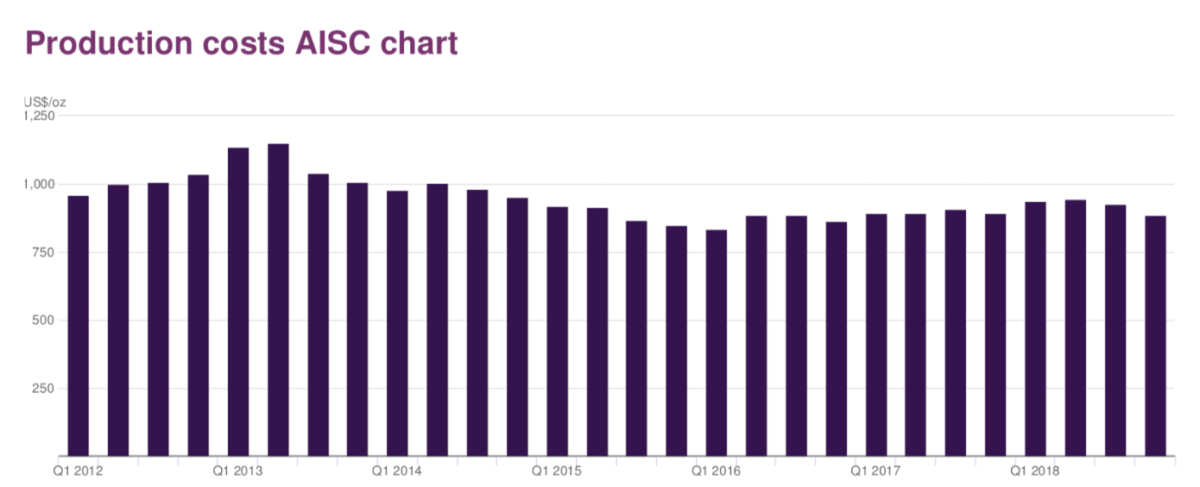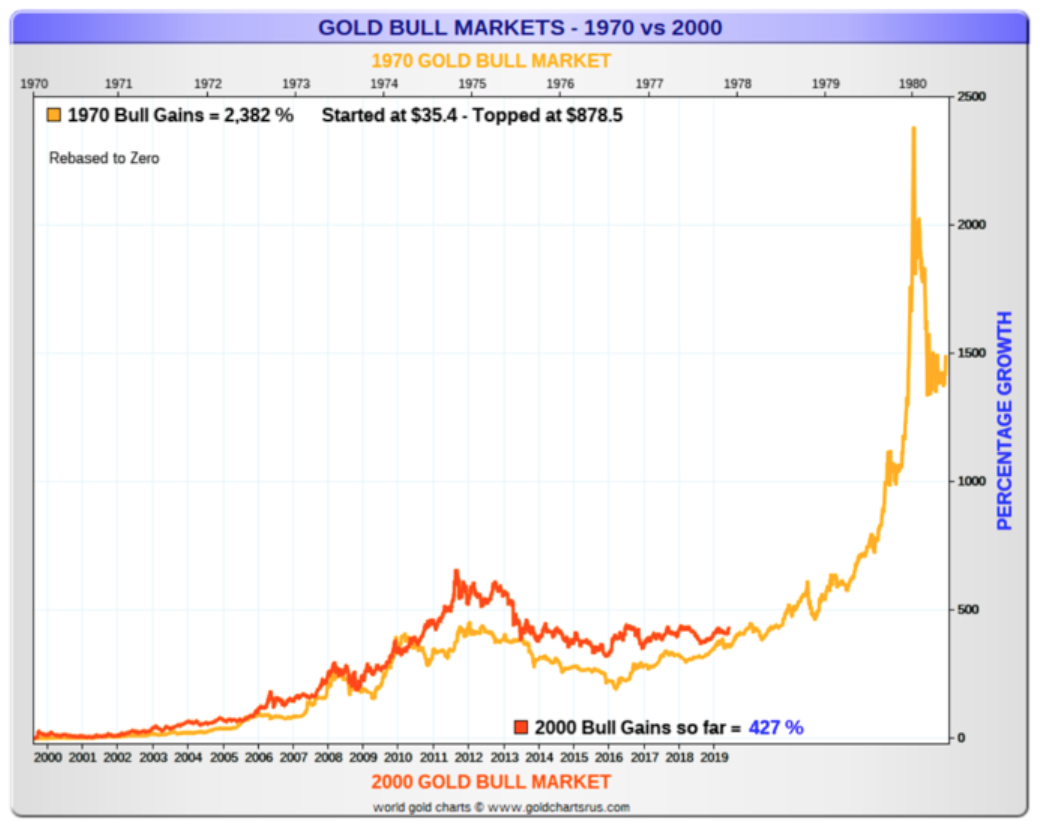Time to look at the miners?

In the first in a new series, Simon Popple explains his 3 R’s system, which he uses to pick winning gold miners for the nascent bull market.
Even before Coronavirus, the investment world was a complex place. Equity markets were close to all-time highs, property prices were on fire, annuity rates were tumbling and negative interest rates were everywhere.
What should you do with your hard-earned money?
With Coronavirus, it’s become a real minefield. The Evening Standard recently reported that 49 out of 100 of the FTSE 100 had either slashed or stopped paying dividends. This is likely to get worse before it gets better. Forcing investors to look further afield.
In this article I want to talk to you about the gold miners. I’ve got a system that’s worked very well for me. I’ve tripled my SIPP since the lockdown. Let me share it with you.
The 3 R’s system is incredibly simple. The resources really relate to you. I would say you need at to be able to commit at least £10,000 to the sector in order to get the diversification you need. Personally, I would suggest you initially invest in eight shares and have some cash, in case there’s a correction. You also need to put some time aside to research the sector and think about risk.
The risk management is more difficult. This is a high-risk sector and not all miners are the same. In my report – The Brookville Capital Intelligence Report – I use a Fantasy Football format to explain the difference. Broadly speaking, the goalkeepers are the largest mining companies, typically with market values over US$5bn. We then have defenders and midfielders, with the forwards (the explorers) being the smallest companies and highest risk.
Before the pandemic, life was a lot easier. As far as the producers were concerned, you mainly looked at their All-in Sustainable Costs (ASICs) relative to the metal price and form a view as to what was going to happen. If you thought the metal price was going up… margins should improve… happy days.
The pandemic has thrown all that into the air.
You now also have to try to work out what happens if a mine closes and they’ve got some debt to repay. Ouch!

But if you’re well diversified, this is likely to be less of an issue. Which leads me on to the research. You’ve got your money, you know your appetite for risk – what do you do next?
Having worked in the market for many years, I’ve rationalised what I look at into about 40 stocks. But to decide where to invest, I then put them through my B.R.I.D.G.E. system. Which stands for:
Balance sheet
Resources
Infrastructure
Diversification
Grade
Exploration potential
Let me tell you what I’m looking for – as well as raise a few red flags you need to think about.
Balance sheet
If they’re not already producing, you need to be very careful about debt on the balance sheet. Production invariably means they’re generating cash to service the debt, but if they’re only exploring, they’re consuming rather than producing cash… potentially making debt servicing problematic.
Obviously, there may be a few exceptions, for example, if they’ve already found a huge deposit which is clearly economic, so they know they can readily raise cash from existing shareholders. But you do need to be careful if there’s debt on the balance sheet, with no certain way of servicing it… I’d call that a red flag.
Resources
As a general rule, the higher the level of reserves and resources, the less risk you are taking. If they’ve already found a lot of what they’re looking for, there are two things that can provide shareholders with some comfort. Firstly, they’re likely to be on the radar of other operators. So, there’s more chance of them being acquired if the share price is attractive. Secondly, if they’ve already made some good discoveries, there’s a reasonable chance they could find more.
In these situations, the shares have often already “popped” – but there can still be some good money to be made – IF they can find more!
Infrastructure
This is where a lot of people make mistakes.
Especially with explorers.
It’s very easy to be blindsided by some great exploration results. High grades and lots of gold or silver can get everyone very excited. But if there’s no roads, power or water nearby, the cost of putting the infrastructure in place can put off prospective investors. Without them, the project is unlikely to move forward.
So, it’s very important to take this into consideration. It’s one reason I like to look at companies who are exploring where there’s a good infrastructure already in place. It does not have to be perfect, but there does need to be enough there to make the numbers stack up.
One of my ideas needs a 50km water pipeline to their project. I initially put them in my core portfolio – because a 50km in Australia is feasible. But they did not reply to my “water question”, so I’ve moved them into my trading portfolio. Although they’re already up over 100%, I’m going to be selling. In this case, I’ll take advantage of a decent uplift in the silver price – because I’ve got concerns about their infrastructure.
Diversity
You don’t want to have all your eggs in one basket.
Personally, I like to be diversified in several different ways.
Firstly, it makes sense to have exposure to different metals. For example, gold, silver and other precious metals such as platinum and palladium.
Secondly, you need to think about having a broad range of countries in your portfolio – I like to have Australian, Canadian and US operations. Not only because it reduces the impact if one government introduces a new law that’s detrimental to the industry, but it also provides me with exposure to other currencies.
Thirdly, I like a mixture of different types of mining companies. I invest in all the ideas I put forward – I “eat my own cooking – which means I’ve got some “players” in every position – not just forwards, but midfielders, defenders and goalkeepers as well.
Grade
Grade is obviously important. Again, you need to look at several things, but as a general rule of thumb, I’d be concerned if a deep underground operation had a grade of less than 4 g/t and 1 g/t would probably apply to an open pit. That’s not to say mines can’t profitably extract below these grades, but I’d suggest you take a closer look if these thresholds aren’t met. Let’s call that another red flag.
It goes without saying that grades in excess of this don’t guarantee success, but I think it’s a useful generalisation.
Exploration potential
With established producers – some of which have market values of several billion US dollars, it’s often a move in the metal price that moves the share price. In the case of explorers – the forwards in my fantasy football team – it tends to be the exploration results that can make a massive difference. If a major discovery happens, the shares can go up 10X – even 50X.
In the example below, I’m referring to a producer, but if you have a high appetite for risk, you may want to think about having a couple of forwards in your portfolio, just in case they find something great!
Why the gold mining stocks
The opportunity is incredibly simple. It’s all about profiting from a tangible asset that’s been around for thousands of years. Gold is recognised as being valuable anywhere in the world. We’re not talking about pieces of paper or digital stuff.
Let me show you why it’s so compelling…
Firstly, take a look at the chart below that sets out the All-In Sustainable Cost (“AISC”) for gold mining companies. Clearly this is an average, but if we were to assume an AISC of US$1,000 per ounce – I don’t think that’s unreasonable.

Source: World Gold Council
Let’s be conservative and assume a gold price of US$1,500 per ounce, that’s a profit to our mining company of US$500 per ounce.
Let’s say the gold price moves up 20% to $1,800 per ounce. Although costs are likely to rise, they are unlikely to rise by the same amount. Let’s say they move up 10% to US$1,100 per ounce. This would provide a notional profit of $700. An increase of 40%.
In this example, a 20% increase in the gold price has delivered a 40% increase in profitability. Mining shares are already heading north… but I’m convinced this is just the start of the journey.
In today’s market many producers are already generating a lot of cash. Not only that, but some have dividend policies whereby they distribute a good chunk of this to their shareholders. Providing a very nice income stream. An income stream that, following the pandemic, many other companies can no longer provide.
Reliable dividend payers are becoming increasingly difficult to find. But many gold miners are still paying theirs. In fact, one of my companies has recently doubled its interim dividend.
Right now, I think the opportunity is in the gold and silver mining sectors. I appreciate that you may feel you’ve missed the boat, with the gold price already being so high…

Source: World Gold Council
But if it were to repeat what happened in the 1970s, we could be in the early phase of a very exciting journey…

Source: Goldchartsrus
About Simon
After completing his MBA Simon spent over 15 years in investment banking and property before turning his attention to gold. After several successful investments he was asked to write Metal & Miners for Moneyweek. When they were sold he teamed up with Jim Rickards for Gold Spectacular. He now writes the Brookville Capital Intelligence Report which provides investment ideas for gold and silver investors.
Comments (0)